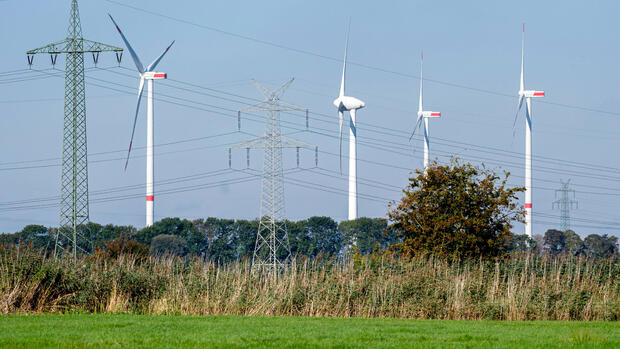Germany has exported a particularly large amount of electricity in recent months.
(Photo: dpa)
Dusseldorf In recent months, Germany has imported more electricity than usual from abroad. According to figures from the Federal Network Agency, the bottom line in June was around four terawatt hours, which corresponds to around eleven percent of German electricity consumption. In May it was around 3.5 terawatt hours or around nine percent of consumption.
The fact that Germany has to import energy in the summer months is not unusual, but the quantities are. Last summer, for example, Germany imported no net electricity, which means that it did not import more energy than it exported. In the summer of 2021, imports peaked at just 1.19 terawatt hours in July, around three percent of consumption.
The new figures caused a stir. So wrote about Union faction vice Jens Spahn on Twitter: “Expensive electricity prices, location under pressure, more dependencies, more CO2 emissions than necessary. This is the energy balance of the traffic light. Thanks for nothing!”
There is always a fear that Germany will now have to purchase more nuclear power from France and will no longer be able to independently and reliably supply itself. Because in mid-April, Germany finally got out of nuclear energy and finally shut down its last three power plants.
Along with Switzerland and Denmark, France was one of the largest net exporters of electricity to Germany in June. A dependency on supplies from the neighboring country would be problematic. French nuclear reactors, for example, may have to cut production more and more frequently in the summer due to high temperatures and water shortages.
>> Read also: “The end of a major technology in Germany”: These are the consequences of the special energy policy
However, industry experts point out that the situation is complex. A spokeswoman for the transmission system operator Amprion, which is responsible for the stability of the electricity grid, explained that imports do not mean that sufficient electricity cannot be generated in Germany for national needs. However, it could be more cost-effective to import electricity that was generated more cheaply than domestically.
The power grid is explicitly designed to function in Europe. “This means that all resources are shared and the system as a whole becomes more resilient,” said the spokeswoman.
More cheap energy available from abroad
The European electricity market is organized in such a way that only the cheapest available power plants supply the electricity that is currently required. Renewable energies have particularly low production costs. If these alone are not sufficient to cover Germany’s electricity needs, additional power plants must be switched on. Then Germany can either start up coal and gas-fired power plants – or import cheaper electricity from abroad.
The fact that Germany is now importing so much electricity only means that other countries can provide large amounts of cheaper energy. Theoretically, this can also be due to the fact that the share of renewables in other European countries has increased. In June, for example, Germany imported large amounts of electricity from Denmark, the Netherlands and Norway.
Data from the Agora Energiewende think tank show that in May only 35 percent of the electricity that other countries exported to Germany came from nuclear power and 47 percent from renewable energies. In June it was also 35 percent nuclear and 43 percent renewable energies. The remainder was distributed mainly between coal and gas-fired power plants.
In principle, an increasing proportion of the electricity requirement in this country is also covered by renewable energies such as wind and solar power. Their share was 46 percent of gross consumption last year. According to the plans of the federal government, it should be at least 80 percent by 2030.
If a particularly large amount of electricity is available from renewable energies, the price can fall extremely as a result. That’s how it was last weekend. Due to a combination of a particularly strong supply of green electricity and low demand, the electricity price on the exchange was even negative for a few hours and fell to its lowest possible point of minus 500 euros per megawatt hour.
>> Read about this: Electricity price at its lowest point: why consumers were able to earn money at the weekend
In other words, if you consumed one megawatt hour, you theoretically got 500 euros for it. Such incentives are intended to prevent overfeeding and relieve the power grids.
Supplying a high proportion of renewables on days when the sun isn’t shining and the wind isn’t blowing is problematic. In order to continue to have secure power plant output despite the end of nuclear power and the planned phase-out of coal by 2030, additional gas-fired power plants with an output of at least 25 gigawatts would probably have to be connected to the grid in Germany. This corresponds to around 50 large power plant blocks.
The Federal Ministry of Economics is currently working behind closed doors on a power plant strategy and is holding talks with the EU Commission. The first tenders for gas-fired power plants could take place by the end of the year.
More: Investors are losing interest in the Berlin district heating network



